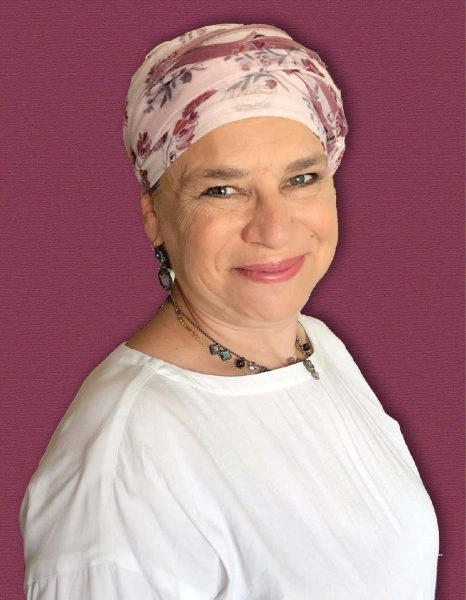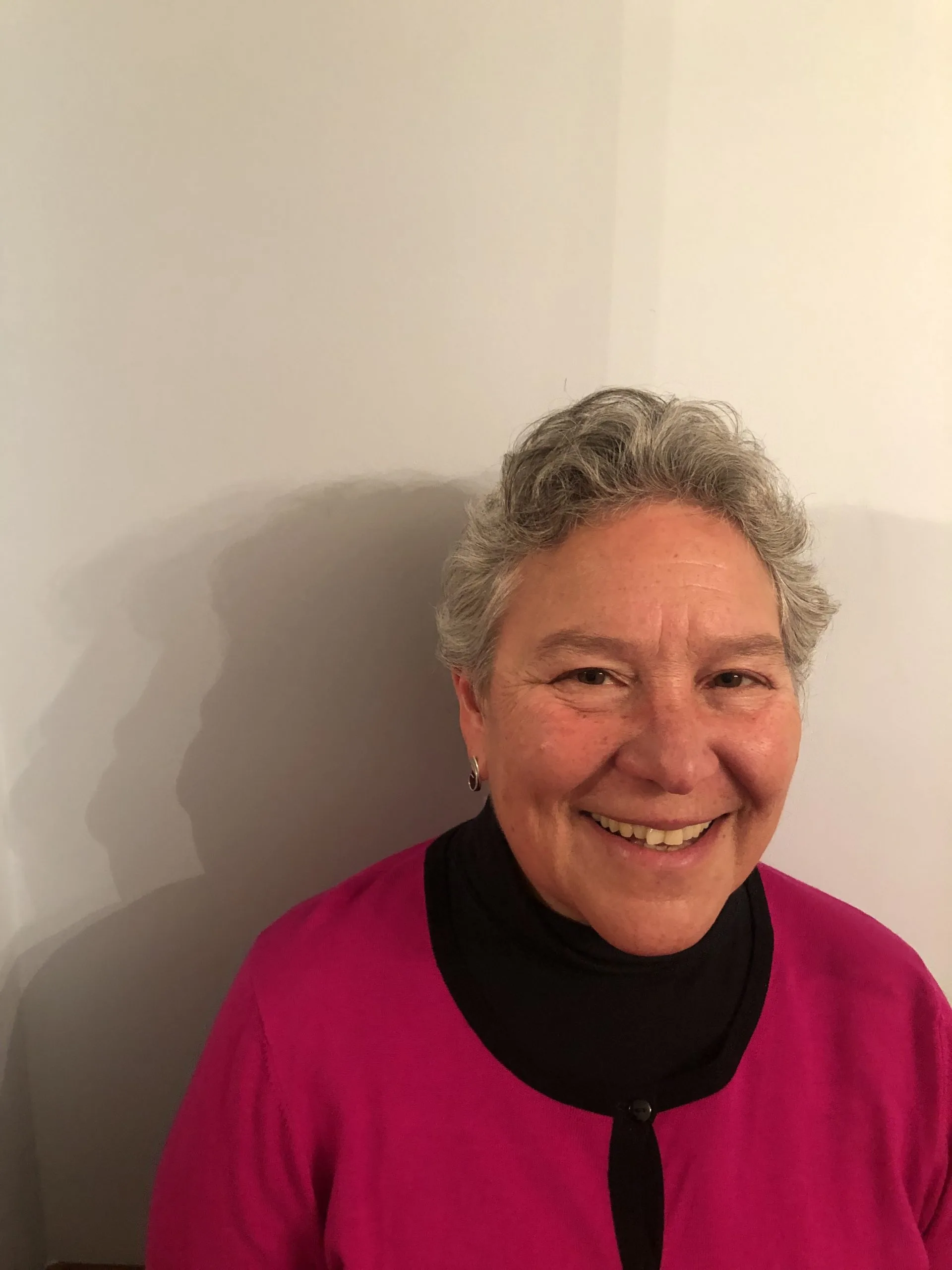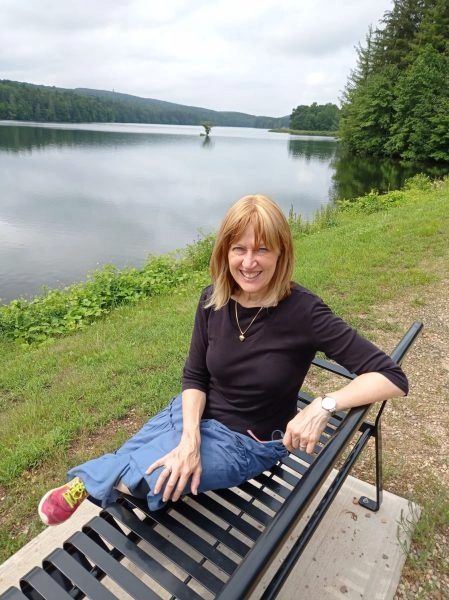Shabbat 7
כְּגוֹן דְּאִית לַהּ מְחִיצּוֹת. וְכִי הָא דְּאָמַר עוּלָּא אָמַר רַבִּי יוֹחָנָן: קַרְפֵּף יוֹתֵר מִבֵּית סָאתַיִם שֶׁלֹּא הוּקַּף לְדִירָה, וַאֲפִילּוּ כּוֹר וַאֲפִילּוּ כּוֹרַיִים, הַזּוֹרֵק לְתוֹכוֹ חַיָּיב. מַאי טַעְמָא? — מְחִיצָה הִיא, אֶלָּא שֶׁמְחוּסֶּרֶת דָּיוֹרִין.
The valley discussed in the mishna in Teharot is unusual, as it refers to a case where it has partitions that are ten handbreadths high surrounding it. And in accordance with that which Ulla said that Rav Yoḥanan said: An enclosure [karpef], a large courtyard that is not contiguous with the house and does not serve a direct purpose for the house, that is greater than a field that produces a crop of two se’a, that was not originally surrounded by a fence for the purpose of residence, but with a partition to protect his belongings, and even if it is as large as a field that produces a crop of one kor, thirty times the size of a se’a, and even two kor, it is still considered a private domain. And, consequently, one who throws an object into it from the public domain on Shabbat is liable. What is the reason for this? It is a partition that surrounds the enclosure and its legal status is like that of a partition in every sense, except that it is lacking residents. Even though the Rabbis were stringent with regard to this enclosure because of the lack of residents and prohibited carrying in it as if it were a karmelit, that does not negate its primary legal status; by Torah law it is a full-fledged private domain. The same is true with regard to the aforementioned valley. The valley is a large area surrounded by partitions erected for the purpose of protection and thereby assumes private domain status.
בִּשְׁלָמָא רַב אָשֵׁי לָא אָמַר כִּדְעוּלָּא, אֶלָּא עוּלָּא מַאי טַעְמָא לָא אָמַר כִּשְׁמַעְתֵּיהּ? אָמַר לָךְ: אִי דְּאִית לַהּ מְחִיצּוֹת ״בִּקְעָה״ קָרֵי לַהּ?! קַרְפֵּף הִיא! וְרַב אָשֵׁי ״רְשׁוּת הַיָּחִיד״ קָתָנֵי.
The Gemara asks: Granted, in explanation of the mishna, Rav Ashi did not say in accordance with the opinion of Ulla, as he provided a reason for it. However, what is the reason that Ulla did not say in accordance with his own halakha that he cited in the name of Rabbi Yoḥanan? The Gemara answers: Ulla could have said to you: If the mishna is referring to a case where it has partitions, would it call that place a valley? It is an enclosure. The implication of the word valley is that there are no partitions at all. And Rav Ashi defends his opinion by saying: The language taught in the mishna is: The private domain and not a karmelit. Therefore, his explanation more closely approximates the language of the mishna.
וְהַכַּרְמְלִית. אַטּוּ כּוּלְּהוּ נָמֵי לָאו כַּרְמְלִית נִינְהוּ? כִּי אֲתָא רַב דִּימִי אֲמַר רַבִּי יוֹחָנָן: לֹא נִצְרְכָה אֶלָּא לְקֶרֶן זָוִית הַסְּמוּכָה לִרְשׁוּת הָרַבִּים. דְּאַף עַל גַּב דְּזִימְנִין דְּדָחֲקִי בֵּיהּ רַבִּים וְעָיְילִי לְגַוַּהּ, כֵּיוָן דְּלָא נִיחָא תַּשְׁמִישְׁתֵּיהּ, כִּי כַרְמְלִית דָּמֵי.
In the Tosefta, the list of places whose legal status is that of a karmelit also includes karmelit. The Gemara asks: Aren’t they, all the other places listed there, i.e., a sea, a valley, and a colonnade, a karmelit too? If so, what is this karmelit that is prominently mentioned here? The Gemara answers: When Rav Dimi came from Eretz Yisrael to Babylonia, he said that Rabbi Yoḥanan said: This addition of karmelit was only necessary in order to teach the case of a corner adjacent to the public domain, where, although at times the multitudes push their way in and enter it, since its use is inconvenient it is considered a karmelit.
כִּי אֲתָא רַב דִּימִי אָמַר רַבִּי יוֹחָנָן: בֵּין הָעַמּוּדִין נִידּוֹן כְּכַרְמְלִית. מַאי טַעְמָא? אַף עַל גַּב דְּדָרְסִי בַּהּ רַבִּים, כֵּיוָן דְּלָא מִסְתַּגִּי לְהוּ בְּהֶדְיָא — כְּכַרְמְלִית דָּמְיָא. אָמַר רַבִּי זֵירָא אָמַר רַב יְהוּדָה: אִיצְטְבָא שֶׁלִּפְנֵי הָעַמּוּדִים נִידּוֹן כְּכַרְמְלִית.
Similarly, when Rav Dimi came from Eretz Yisrael to Babylonia, he said that Rabbi Yoḥanan said: Between the pillars alongside the public domain is judged like a karmelit. What is the reason for this? Although the multitudes stride there, since they cannot walk in it in a direct manner, uninterrupted, it is considered like a karmelit. Rabbi Zeira said that Rav Yehuda said: The same is true for the bench that is before the pillars upon which the merchants place their wares; it is judged to be like a karmelit.
לְמַאן דְּאָמַר בֵּין הָעַמּוּדִים, כׇּל שֶׁכֵּן אִיצְטְבָא. לְמַאן דְּאָמַר אִיצְטְבָא — אִיצְטְבָא הוּא דְּלָא נִיחָא תַּשְׁמִישְׁתֵּיהּ, אֲבָל בֵּין הָעַמּוּדִים דְּנִיחָא תַּשְׁמִישְׁתֵּיהּ — לָא. לִישָּׁנָא אַחֲרִינָא: אֲבָל בֵּין הָעַמּוּדִין דְּזִימְנִין דְּדָרְסִי לֵיהּ רַבִּים, כִּרְשׁוּת הָרַבִּים דָּמְיָא.
The Gemara comments: According to the one who said that between the pillars is considered like a karmelit, all the more so a bench is considered a karmelit. However, according to the one who said that a bench is a karmelit, one could say that that is so specifically with regard to a bench because its use is inconvenient. However, the space between the pillars, whose use is convenient, would not be considered a karmelit. Another version of that statement: However, between the pillars where, at times, the multitudes stride there is considered like the public domain.
אָמַר רַבָּה בַּר שֵׁילָא אָמַר רַב חִסְדָּא: לְבֵינָה זְקוּפָה בִּרְשׁוּת הָרַבִּים וְזָרַק וְטָח בְּפָנֶיהָ — חַיָּיב. עַל גַּבָּהּ — פָּטוּר.
With regard to the question to what degree does the use of the multitudes determine whether a specific place is considered a public domain, the Gemara cites the halakha that Rabba bar Sheila said that Rav Ḥisda said: If an upright brick was placed in the public domain and one threw an object from a distance of four cubits and he stuck the object to its side, he is liable for throwing in the public domain. But if the object landed atop the brick, he is not liable. Because the multitudes do not step on the brick, it is not a full-fledged public domain.
אַבָּיֵי וְרָבָא דְּאָמְרִי תַּרְוַיְיהוּ: וְהוּא שֶׁגְּבוֹהָה שְׁלֹשָׁה, דְּלָא דָּרְסִי לַהּ רַבִּים. אֲבָל הִיזְמֵי וְהִיגֵי, אַף עַל גַּב דְּלָא גְּבִיהֵי שְׁלֹשָׁה. וְחִיָּיא בַּר רַב אָמַר: אֲפִילּוּ הִיזְמֵי וְהִיגֵי, אֲבָל צוֹאָה לָא. וְרַב אָשֵׁי אָמַר: אֲפִילּוּ צוֹאָה.
It was Abaye and Rava, who both said: And that is specifically when that brick is at least three handbreadths high, as then the multitudes do not step on it, and, therefore, even though the brick is standing in the public domain, it is considered an independent domain. However, thorns and shrubs, even though they are not three handbreadths high, are not considered part of the public domain. Since people do not walk on thorns, those areas cannot be considered part of the public domain. And Ḥiyya bar Rav said: Even the place where there are thorns and shrubs in the public domain, if they were low, the place is considered part of the public domain. However, a place in the public domain where there are feces is not considered part of the public domain, as people do not walk there. And Rav Ashi said: Even a place in the public domain where there are feces is considered part of the public domain, since ultimately people who are rushing to work do not take care to avoid it and will step on it.
אָמַר רַבָּה דְּבֵי רַב שֵׁילָא: כִּי אֲתָא רַב דִּימִי אָמַר רַבִּי יוֹחָנָן: אֵין כַּרְמְלִית פְּחוּתָה מֵאַרְבָּעָה. וְאָמַר רַב שֵׁשֶׁת: וְתוֹפֶסֶת עַד עֲשָׂרָה. מַאי ״וְתוֹפֶסֶת עַד עֲשָׂרָה״? אִילֵּימָא דְּאִי אִיכָּא מְחִיצָה עֲשָׂרָה הוּא דְּהָוֵי כַּרְמְלִית, וְאִי לָא — לָא הָוֵי כַּרְמְלִית, וְלָא? וְהָאָמַר רַב גִּידֵּל אָמַר רַב חִיָּיא בַּר יוֹסֵף אָמַר רַב: בַּיִת שֶׁאֵין בְּתוֹכוֹ עֲשָׂרָה וְקֵרוּיוֹ מַשְׁלִימוֹ לַעֲשָׂרָה, עַל גַּגּוֹ — מוּתָּר לְטַלְטֵל בְּכוּלּוֹ, בְּתוֹכוֹ — אֵין מִטַּלְטְלִין בּוֹ אֶלָּא אַרְבַּע אַמּוֹת!
Rabba from the school of Rav Sheila said: When Rav Dimi came from Eretz Yisrael to Babylonia, he said that Rabbi Yoḥanan said: There is no karmelit less than four handbreadths. And Rav Sheshet added and said: And the karmelit extends up to ten handbreadths. With regard to the formulation of Rav Sheshet, the Gemara wondered: What is the meaning of the phrase: And extends up to ten? If you say that it means if there is a partition ten handbreadths high surrounding it then it is considered a karmelit, and if not, it is not considered a karmelit. And is it not a karmelit? Didn’t Rav Giddel say that Rav Ḥiyya bar Yosef said that Rav said: A house that does not have walls inside it that are ten handbreadths high, and with its roofing it reaches a height of ten handbreadths above the ground; on its roof, one may carry on all of it, as its roof is a private domain in every sense, and inside it, one may only carry four cubits, as inside, the height is insufficient to render it a private domain, and it retains karmelit status? Apparently, even an area less than ten handbreadths high has the legal status of a karmelit.
אֶלָּא מַאי ״וְתוֹפֶסֶת עַד עֲשָׂרָה״ — דְּעַד עֲשָׂרָה הוּא דְּהָוְיָא כַּרְמְלִית, לְמַעְלָה מֵעֲשָׂרָה טְפָחִים לָא הָוְיָא כַּרְמְלִית. וְכִי הָא דַּאֲמַר לֵיהּ שְׁמוּאֵל לְרַב יְהוּדָה: שִׁינָּנָא, לָא תְּיהַוֵּי בְּמִילֵּי דְשַׁבְּתָא לְמַעְלָה מֵעֲשָׂרָה. לְמַאי הִלְכְתָא? אִילֵּימָא דְּאֵין רְשׁוּת הַיָּחִיד לְמַעְלָה מֵעֲשָׂרָה? וְהָאָמַר רַב חִסְדָּא: נָעַץ קָנֶה בִּרְשׁוּת הַיָּחִיד וְזָרַק וְנָח עַל גַּבָּיו, אֲפִילּוּ גָּבוֹהַּ מֵאָה אַמָּה — חַיָּיב, מִפְּנֵי שֶׁרְשׁוּת הַיָּחִיד עוֹלָה עַד לָרָקִיעַ.
Rather, what is the meaning of Rav Sheshet’s formulation: And extends up to ten? Apparently, up to ten handbreadths is that which is within the parameters of a karmelit, and above ten handbreadths is not a karmelit. And as Shmuel said to Rav Yehuda: Keen scholar [shinnana], do not be involved with questions in the matters of Shabbat above ten handbreadths. The Gemara elaborates: With regard to what halakha and in the context of what issue did Shmuel make this statement? If you say his intention was that there is no private domain above ten handbreadths, didn’t Rav Ḥisda say: One who stuck a stick in the ground of the private domain and threw an object from the public domain and it landed atop it, even if the stick was a hundred cubits high, he is liable, since the private domain extends up to the sky? Apparently, there is a private domain even above ten handbreadths.
אֶלָּא דְּאֵין רְשׁוּת הָרַבִּים לְמַעְלָה מֵעֲשָׂרָה — מַתְנִיתִין הִיא! דִּתְנַן: הַזּוֹרֵק אַרְבַּע אַמּוֹת בַּכּוֹתֶל, לְמַעְלָה מֵעֲשָׂרָה טְפָחִים — כְּזוֹרֵק בָּאֲוִיר. לְמַטָּה מֵעֲשָׂרָה טְפָחִים — כְּזוֹרֵק בָּאָרֶץ.
Rather, suggest that Shmuel meant that there is no public domain above ten handbreadths. It is a mishna, and why would he repeat an explicit mishna? As we learned in a mishna: With regard to one who throws an object four cubits in the public domain, and the object came to rest on a wall standing in the public domain above ten handbreadths from the ground, it is as if he were throwing an object in the air and it never landed. If it came to rest below ten handbreadths off the ground, it is as if he were throwing an object to the ground. That is an explicit mishna stating that the area of the public domain does not go beyond ten handbreadths off the ground.
אֶלָּא כַּרְמְלִית, דְּאֵין כַּרְמְלִית לְמַעְלָה מֵעֲשָׂרָה. וְאַקִּילוּ בַּהּ רַבָּנַן מִקּוּלֵּי רְשׁוּת הַיָּחִיד וּמִקּוּלֵּי רְשׁוּת הָרַבִּים. מִקּוּלֵּי רְשׁוּת הַיָּחִיד — דְּאִי אִיכָּא מָקוֹם אַרְבָּעָה הוּא דְּהָוְיָא כַּרְמְלִית, וְאִי לָא — מְקוֹם פָּטוּר בְּעָלְמָא הוּא. מִקּוּלֵּי רְשׁוּת הָרַבִּים — דְּעַד עֲשָׂרָה טְפָחִים הוּא דְּהָוְיָא כַּרְמְלִית, לְמַעְלָה מֵעֲשָׂרָה טְפָחִים לָא הָוְיָא כַּרְמְלִית.
Rather, it must be that Shmuel’s statement was referring to a karmelit; there is no karmelit above ten handbreadths. And, if so, the Sages were lenient with regard to a karmelit and applied some leniencies of the private domain and some leniencies of the public domain. The Gemara elaborates: Some leniencies of the private domain: That if there is an area of four handbreadths, then it is a karmelit, and if there is not an area of four handbreadths, it is merely an exempt domain. Some leniencies of the public domain: That until a height of ten handbreadths, it is a karmelit, above ten handbreadths is not a karmelit.
גּוּפָא, אָמַר רַב גִּידֵּל אָמַר רַב חִיָּיא בַּר יוֹסֵף אָמַר רַב: בַּיִת שֶׁאֵין תּוֹכוֹ עֲשָׂרָה וְקֵרוּיוֹ מַשְׁלִימוֹ לַעֲשָׂרָה, עַל גַּגּוֹ — מוּתָּר לְטַלְטֵל בְּכוּלּוֹ, בְּתוֹכוֹ — אֵין מְטַלְטְלִין בּוֹ אֶלָּא בְּאַרְבַּע אַמּוֹת.
To the matter itself: It was mentioned above that Rav Giddel said that Rav Ḥiyya bar Yosef said that Rav said: A house that does not have inside it walls that are ten handbreadths high, and with its roofing it reaches a height of ten handbreadths above the ground; on its roof, one may carry on all of it, as its roof is a private domain in every sense, and inside it, one may only carry four cubits, as inside the height is insufficient to render it a private domain and it retains karmelit status.
אָמַר אַבָּיֵי: וְאִם חָקַק בּוֹ אַרְבָּעָה עַל אַרְבָּעָה וְהִשְׁלִימוֹ לַעֲשָׂרָה, — מוּתָּר לְטַלְטֵל בְּכוּלּוֹ. מַאי טַעְמָא? — הָוֵי חוֹרֵי רְשׁוּת הַיָּחִיד, וְחוֹרֵי רְשׁוּת הַיָּחִיד כִּרְשׁוּת הַיָּחִיד דָּמוּ. דְּאִיתְּמַר: חוֹרֵי רְשׁוּת הַיָּחִיד כִּרְשׁוּת הַיָּחִיד דָּמוּ, חוֹרֵי רְשׁוּת הָרַבִּים, אַבָּיֵי אוֹמֵר כִּרְשׁוּת הָרַבִּים דָּמוּ. רָבָא אוֹמֵר: לָאו כִּרְשׁוּת הָרַבִּים דָּמוּ.
With regard to this halakha, Abaye said: And if he dug out an area of four by four handbreadths in the floor of the house and in the place where the digging took place, its height to the ceiling reaches ten handbreadths, the house becomes a private domain, and it is permitted to carry in the entire house. What is the reason for this? Since the dug out area is a private domain, the rest of the house is ancillary to it, and it assumes the legal status of the holes of the private domain, and the holes of the private domain, although they lack the measure of a private domain, are considered like the private domain itself. As it was stated: Everyone agrees that the holes of the private domain are considered like the private domain; since they are subsumed within the private domain, they are judged to be like it. However, they disagreed with regard to the holes of the public domain. Abaye says: They are considered to be like the public domain. And Rava says: They are not considered to be like the public domain; they are either a karmelit or an exempt domain.
אֲמַר לֵיהּ רָבָא לְאַבָּיֵי: לְדִידָךְ דְּאָמְרַתְּ חוֹרֵי רְשׁוּת הָרַבִּים כִּרְשׁוּת הָרַבִּים דָּמוּ, מַאי שְׁנָא מֵהָא דְּכִי אֲתָא רַב דִּימִי אֲמַר רַבִּי יוֹחָנָן: לֹא נִצְרְכָה אֶלָּא לְקֶרֶן זָוִית הַסְּמוּכָה לִרְשׁוּת הָרַבִּים, וְתִיהְוֵי כְּחוֹרֵי רְשׁוּת הָרַבִּים?! הָתָם לָא נִיחָא תַּשְׁמִישְׁתֵּיהּ, הָכָא נִיחָא תַּשְׁמִישְׁתֵּיהּ.
Rava said to Abaye: According to you, who said that the holes of the public domain are considered like the public domain, in what way is it different from this halakha? As when Rav Dimi came from Eretz Yisrael to Babylonia, he said that Rabbi Yoḥanan said: This addition of karmelit to the Tosefta was only necessary to teach the case of a corner adjacent to the public domain. And, according to your opinion, let this corner be like the holes of the public domain, and its legal status should be that of a public domain itself and not that of a karmelit. Abaye answered: There is a distinction between the cases. There, the corner, its use is not convenient; here, the holes of the public domain, their use is convenient. Since it is convenient to utilize the holes of the public domain, and they are in fact utilized, they are a public domain in every sense.
תְּנַן: הַזּוֹרֵק אַרְבַּע אַמּוֹת בַּכּוֹתֶל, לְמַעְלָה מֵעֲשָׂרָה — כְּזוֹרֵק בָּאֲוִיר. לְמַטָּה מֵעֲשָׂרָה טְפָחִים — כְּזוֹרֵק בָּאָרֶץ. וְהָוֵינַן בַּהּ: מַאי כְּזוֹרֵק בָּאָרֶץ? וְהָא לָא נָח!
The Gemara raised an additional difficulty for Abaye’s opinion: We learned in a mishna with regard to one who throws an object four cubits in the public domain, and the object came to rest on a wall standing in the public domain above ten handbreadths from the ground, it is as if he were throwing an object in the air and it never landed. If it came to rest below ten handbreadths off the ground, it is as if he were throwing an object to the ground, and he is liable. And we discussed this halakha: What is the reason that when the wall is not ten handbreadths high it is as if he threw it to the ground? The object did not come to rest on the wall, as presumably the object hit the wall and then fell to the ground. Since there was no act of placement, he did not perform the prohibited labor of carrying in the public domain.
וְאָמַר רַבִּי יוֹחָנָן, בִּדְבֵילָה שְׁמֵינָה שָׁנוּ. וְאִי סָלְקָא דַּעְתָּךְ חוֹרֵי רְשׁוּת הָרַבִּים כִּרְשׁוּת הָרַבִּים דָּמוּ, לְמָה לִי לְאוֹקֻמַהּ בִּדְבֵילָה שְׁמֵינָה? לוֹקְמַהּ בִּצְרוֹר וְחֵפֶץ, וּדְנָח בְּחוֹר!
And Rabbi Yoḥanan said that they learned this mishna as referring to a case when he threw a juicy cake of figs that sticks to the wall and remains there. And should it enter your mind to say that the holes of the public domain are considered like the public domain, why do I need to establish the mishna as referring to the case of a juicy cake of figs? Let us establish it simply as referring to the case of a run-of-the-mill stone or object, and that it came to rest in a hole.
זִימְנִין מְשַׁנֵּי לַהּ, שָׁאנֵי צְרוֹר וְחֵפֶץ דְּמִיהֲדַר וְאָתֵי. זִימְנִין מְשַׁנֵּי לַהּ, בְּכוֹתֶל דְּלֵית בֵּיהּ חוֹר. מִמַּאי? — מִדְּקָתָנֵי רֵישָׁא: זָרַק לְמַעְלָה מֵעֲשָׂרָה טְפָחִים — כְּזוֹרֵק בָּאֲוִיר. וְאִי סָלְקָא דַּעְתָּךְ בְּכוֹתֶל דְּאִית בֵּיהּ חוֹר, אַמַּאי כְּזוֹרֵק בָּאֲוִיר? הָא נָח בְּחוֹר!
Sometimes Abaye would answer the question by saying that a stone or object is different from a juicy fig in that they come back when they are thrown and do not come to rest in the hole. Therefore, it was simpler to establish the mishna in the case of a fig. And sometimes he would answer it by saying that the mishna is referring to a wall that has no hole. And from where does he find support for this explanation? From that which we learned in the first clause of the mishna: One who throws above ten handbreadths from the ground, it is as if he is throwing in the air and it never landed. And if it should enter your mind to say that we are speaking here about a wall that has a hole in it, why should it be as if he threw it in the air and it never landed? It rested in a hole, and that hole is a private domain, as it is above ten handbreadths, and in that way the prohibited labor of carrying in was performed.
וְכִי תֵּימָא מַתְנִיתִין דְּלֵית בְּהוּ אַרְבָּעָה עַל אַרְבָּעָה, וְהָאָמַר רַב יְהוּדָה אָמַר רַבִּי חִיָּיא: זָרַק לְמַעְלָה מֵעֲשָׂרָה טְפָחִים וְהָלְכָה וְנָחָה בְּחוֹר כׇּל שֶׁהוּא — בָּאנוּ לְמַחְלוֹקֶת רַבִּי מֵאִיר וְרַבָּנַן. דְּרַבִּי מֵאִיר סָבַר חוֹקְקִין לְהַשְׁלִים. וְרַבָּנַן סָבְרִי אֵין חוֹקְקִין לְהַשְׁלִים. אֶלָּא לָאו שְׁמַע מִינַּהּ, בְּכוֹתֶל דְּלֵית בֵּיהּ חוֹר. שְׁמַע מִינַּהּ.
And if you say that the mishna is referring to a case where holes do not have an area of at least four by four handbreadths, which is common for holes in the wall, and therefore the holes have exempt domain status, didn’t Rav Yehuda say that Rabbi Ḥiyya said: One who threw an object above ten handbreadths and the object went and came to rest in a hole of any size, we have arrived in this matter at the dispute between Rabbi Meir and the Rabbis? The decision whether or not there is a prohibition here depends on an analysis of that dispute. Rabbi Meir holds that in all cases where a certain minimum area is required for a specific halakha to take effect and the existing area is smaller, if, theoretically, circumstances would allow to carve out and create an area of the requisite size, one considers it as if he carves out the space to complete it, i.e., the space has the legal status as if it was actually enlarged. And the Rabbis hold that one does not carve out the space to complete it. Rather, the legal status of the area corresponds to its actual size. Consequently, according to Rabbi Meir, if an object landed in a small hole, one considers the area as if it were carved out to complete the hole to four by four handbreadths, and its legal status is like that of a private domain in every sense. Rather, can we not conclude from the mishna that maintains that one who throws an object onto a wall above ten handbreadths it is as if he threw it in the air, that it is referring to a wall that has no hole in it, and the possibility of carving out the space was never raised? The Gemara concludes: Indeed, conclude from it.
גּוּפָא. אָמַר רַב חִסְדָּא: נָעַץ קָנֶה בִּרְשׁוּת הַיָּחִיד, וְזָרַק וְנָח עַל גַּבָּיו, אֲפִילּוּ גָּבוֹהַּ מֵאָה אַמָּה — חַיָּיב, מִפְּנֵי שֶׁרְשׁוּת הַיָּחִיד עוֹלָה עַד לָרָקִיעַ. לֵימָא רַב חִסְדָּא דְּאָמַר כְּרַבִּי? דְּתַנְיָא: זָרַק וְנָח עַל גַּבֵּי זִיז כׇּל שֶׁהוּא — רַבִּי מְחַיֵּיב וַחֲכָמִים פּוֹטְרִים. אַלְמָא לָא בָּעֵינַן מָקוֹם אַרְבָּעָה עַל אַרְבָּעָה.
The Gemara again returns to the matter that was mentioned above in passing itself [gufa]. Rav Ḥisda said: One who stuck a stick in the ground of the private domain, and an object that he himself threw from the public domain rested atop it, even if that stick was a hundred cubits high, he is liable. The reason for this is because the private domain rises up to the sky. The Gemara suggests: Let us say that when Rav Ḥisda said his statement, it was in accordance with the opinion of Rabbi Yehuda HaNasi. The tanna’im disagreed with regard to a similar issue, as it was taught in a baraita: One who threw an object on Shabbat in the public domain, and the object rested on a projection of any size, Rabbi Yehuda HaNasi deems him liable and the Rabbis deem him exempt. Consequently, only according to Rabbi Yehuda HaNasi is there no need for the object to come to rest on an area of a specific size, and therefore the statement of Rav Ḥisda with regard to the stick can only be in accordance with Rabbi Yehuda HaNasi’s opinion.























